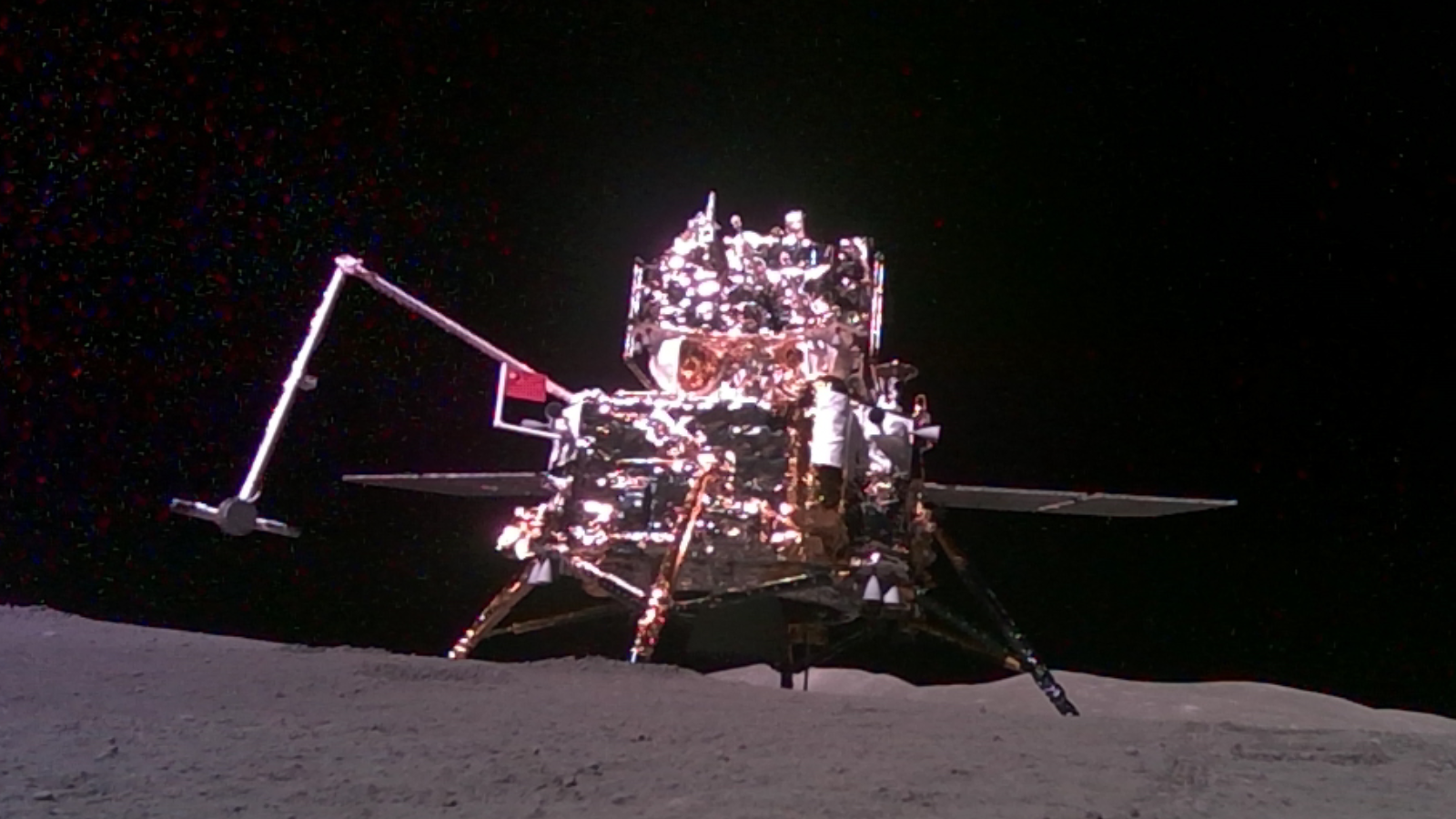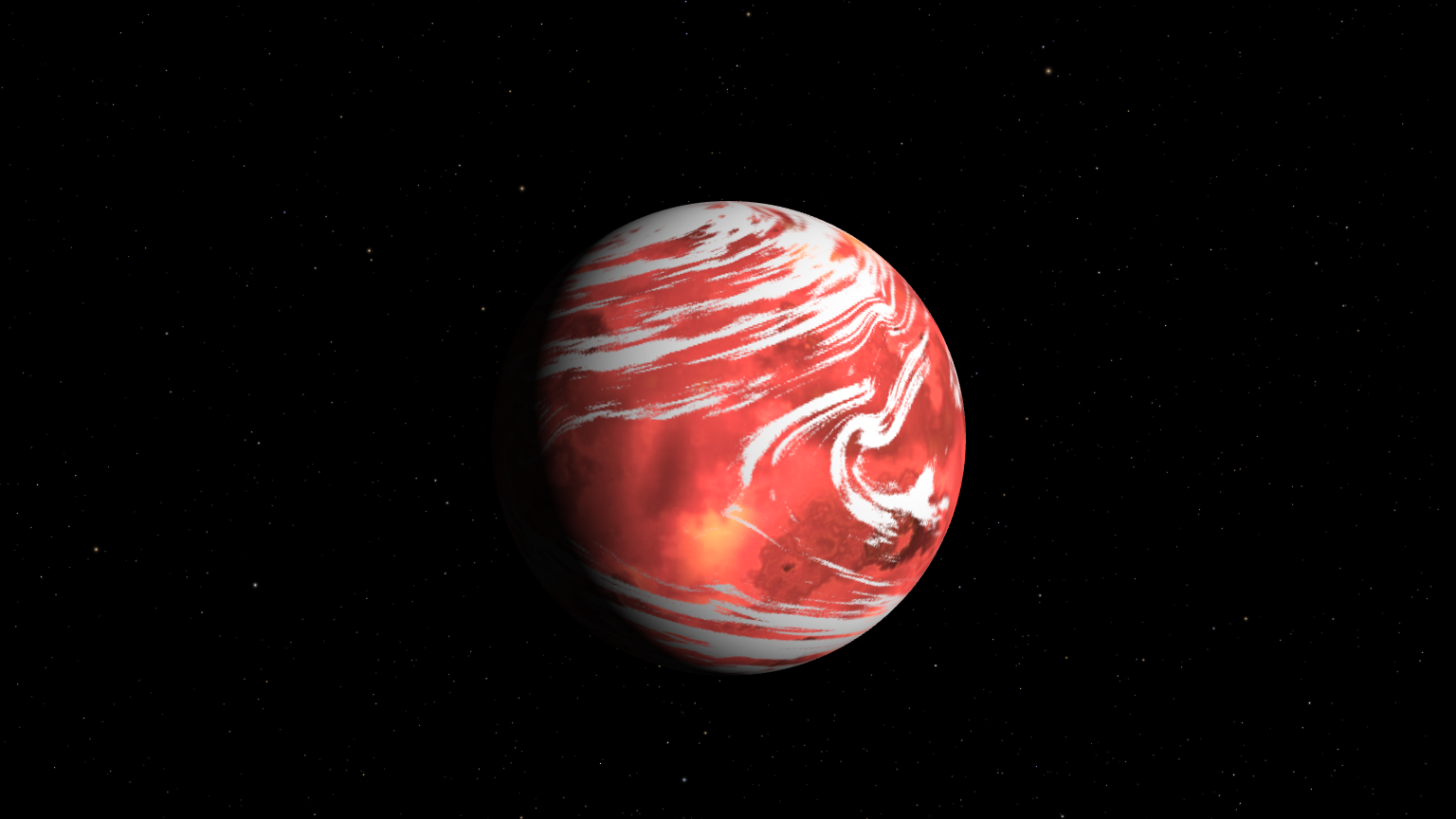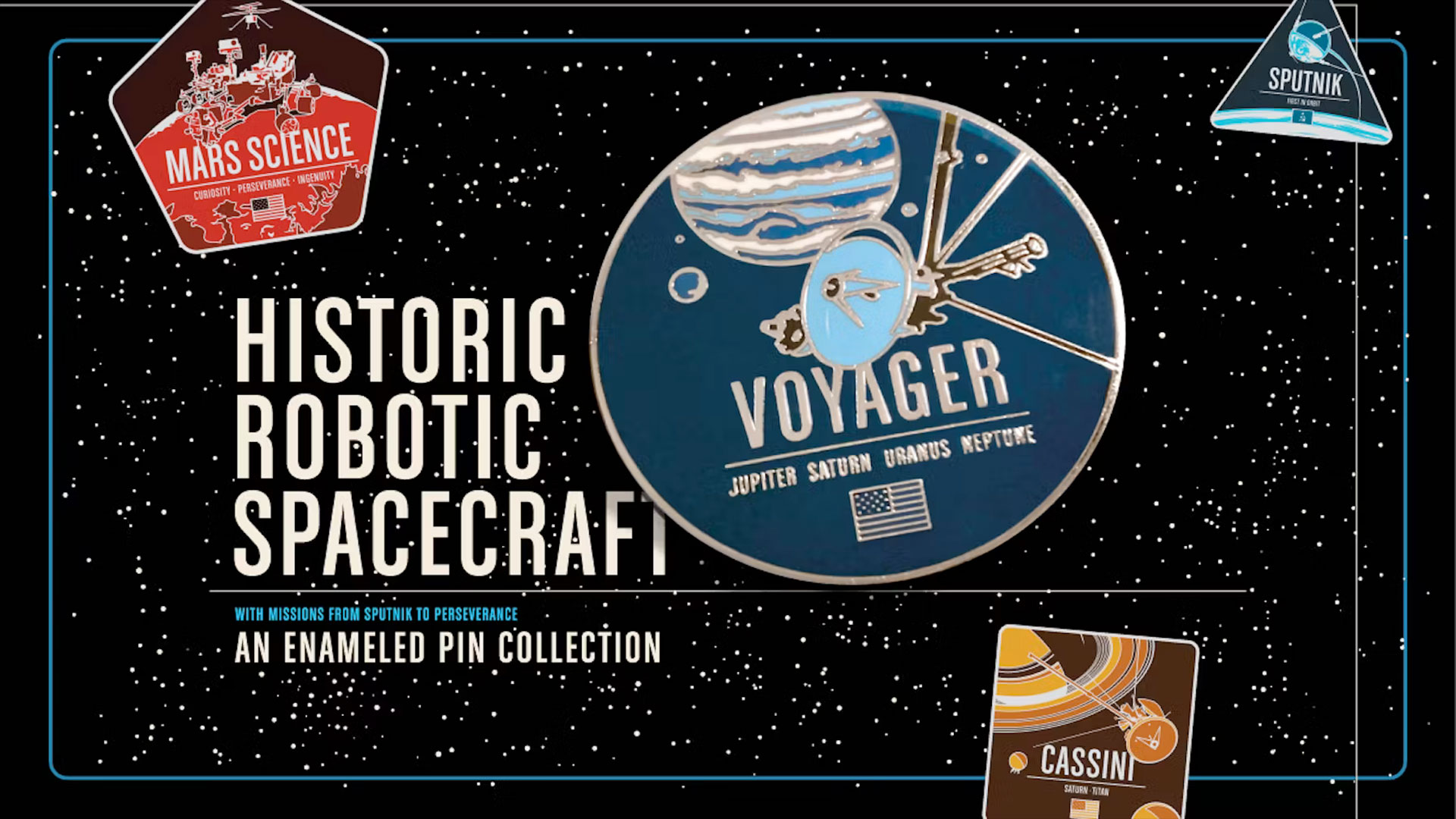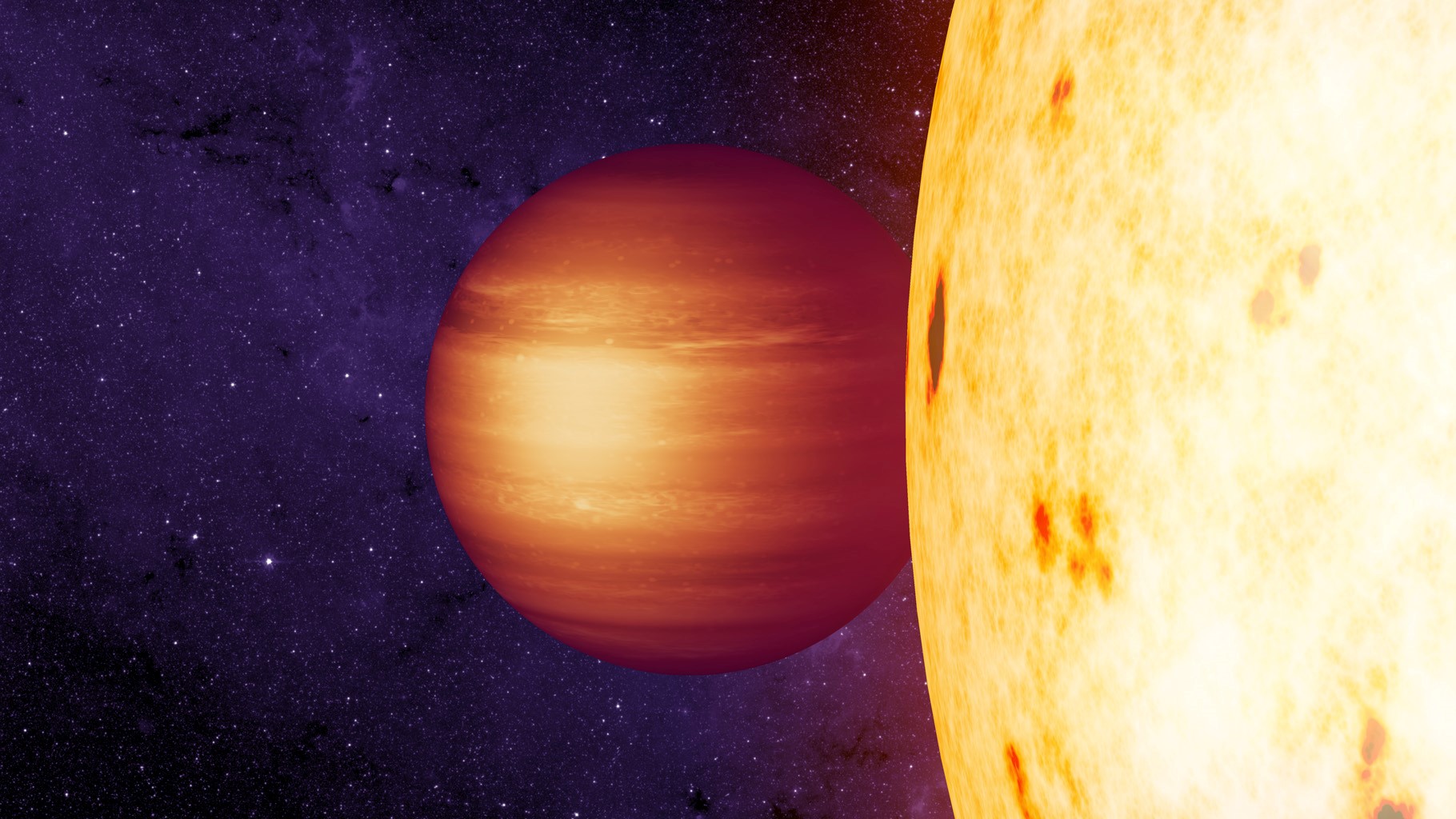Newfound Alien Planet is Best Candidate Yet to Support Life, Scientists Say
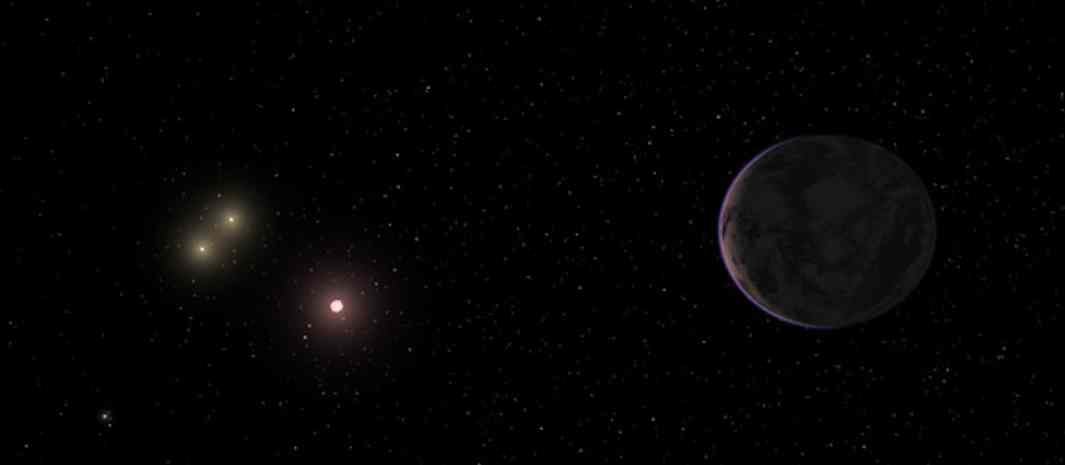
A potentially habitable alien planet — one that scientists say is the best candidate yet to harbor water, and possibly even life, on its surface — has been found around a nearby star.
The planet is located in the habitable zone of its host star, which is a narrow circumstellar region where temperatures are neither too hot nor too cold for liquid water to exist on the planet's surface.
"It's the Holy Grail of exoplanet research to find a planet around a star orbiting at the right distance so it's not too close where it would lose all its water and boil away, and not too far where it would all freeze," Steven Vogt, an astronomer at the University of California, Santa Cruz, told SPACE.com. "It's right smack in the habitable zone — there's no question or discussion about it. It's not on the edge, it's right in there."
Vogt is one of the authors of the new study, which was led by Guillem Anglada-Escudé and Paul Butler of the Carnegie Institution for Science, a private, nonprofit research organization based in Washington, D.C.
"This planet is the new best candidate to support liquid water and, perhaps, life as we know it," Anglada-Escudé said in a statement.
An alien super-Earth
The researchers estimate that the planet, called GJ 667Cc, is at least 4.5 times as massive as Earth, which makes it a so-called super-Earth. It takes roughly 28 days to make one orbital lap around its parent star, which is located a mere 22 light-years away from Earth, in the constellation Scorpius (the Scorpion).
Get the Space.com Newsletter
Breaking space news, the latest updates on rocket launches, skywatching events and more!
"This is basically our next-door neighbor," Vogt said. "It's very nearby. There are only about 100 stars closer to us than this one."
Interestingly enough, the host star, GJ 667C, is a member of a triple-star system. GJ 667C is an M-class dwarf star that is about a third of the mass of the sun, and while it is faint, it can be seen by ground-based telescopes, Vogt said. [Gallery: The Strangest Alien Planets]
"The planet is around one star in a triple-star system," Vogt explained. "The other stars are pretty far away, but they would look pretty nice in the sky."
The discovery of a planet around GJ 667C came as a surprise to the astronomers, because the entire star system has a different chemical makeup than our sun. The system has much lower abundances of heavy elements (elements heavier than hydrogen and helium), such as iron, carbon and silicon.
"It's pretty deficient in metals," Vogt said. "These are the materials out of which planets form — the grains of stuff that coalesce to eventually make up planets — so we shouldn't have really expected this star to be a likely case for harboring planets."
The fortuitous discovery could mean that potentially habitable alien worlds could exist in a greater variety of environments than was previously thought possible, the researchers said.
"Statistics tell us we shouldn't have found something this quickly this soon unless there's a lot of them out there," Vogt said. "This tells us there must be an awful lot of these planets out there. It was almost too easy to find, and it happened too quickly."
The detailed findings of the study will be published in the Astrophysical Journal Letters.
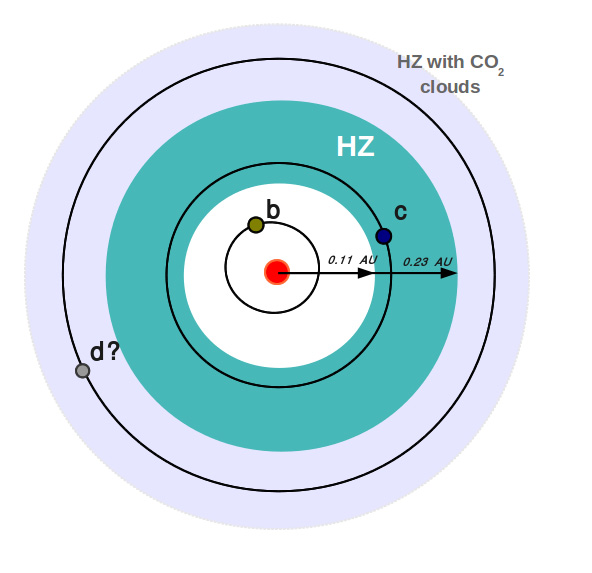
An intriguing star system
Another super-Earth that orbits much closer to GJ 667C was previously detected in 2010, but the finding was never published, Vogt added. This planet, called GJ 667Cb, takes 7.2 days to circle the star but its location makes it far too hot to sustain liquid water on its surface.
"It's basically glowing cinders, or a well-lit charcoal," Vogt said. "We know about a lot of these, but they're thousands of degrees and not places where you could live."
But, the newly detected GJ 667Cc planet is a much more intriguing candidate, he said.
"When a planet gets bigger than about 10 times the size of the Earth, there's a runaway process that happens, where it begins to eat up all the gas and ice in the disk that it's forming out of and swells quickly into something like Uranus, Jupiter or Saturn," Vogt explained. "When you have a surface and the right temperature, if there's water around, there's a good chance that it could be in liquid form. This planet is right in that sweet spot in the habitable zone, so we've got the right temperature and the right mass range."
Preliminary observations also suggest that more planets could exist in this system, including a gas giant planet and another super-Earth that takes about 75 days to circle the star. More research will be needed to confirm these planetary candidates, as well as to glean additional details about the potentially habitable super-Earth, the scientists said.
Finding nearby alien planets
To make their discovery, the researchers used public data from the European Southern Observatory combined with observations from the W.M. Keck Observatory in Hawaii and the new Carnegie Planet Finder Spectrograph at the Magellan II Telescope in Chile.
Follow-up analyses were also made using a planet-hunting technique that measures the small dips, or wobbles, in a star's motion caused by the gravitational tug of a planet.
"With the advent of a new generation of instruments, researchers will be able to survey many M dwarf stars for similar planets and eventually look for spectroscopic signatures of life in one of these worlds," Anglada-Escudé said in a statement. Anglada-Escudé was with the Carnegie Institution for Science when he conducted the research, but has since moved on to the University of Gottingen in Germany.
With the GJ 667C system being relatively nearby, it also opens exciting possibilities for probing potentially habitable alien worlds in the future, Vogt said, which can't easily be done with the planets that are being found by NASA's prolific Kepler spacecraft.
"The planets coming out of Kepler are typically thousands of light-years away and we could never send a space probe out there," Vogt said. "We've been explicitly focusing on very nearby stars, because with today's technology, we could send a robotic probe out there, and within a few hundred years, it could be sending back picture postcards."
You can follow SPACE.com staff writer Denise Chow on Twitter @denisechow. Follow SPACE.com for the latest in space science and exploration news on Twitter @Spacedotcom and on Facebook.
Join our Space Forums to keep talking space on the latest missions, night sky and more! And if you have a news tip, correction or comment, let us know at: community@space.com.

Denise Chow is a former Space.com staff writer who then worked as assistant managing editor at Live Science before moving to NBC News as a science reporter, where she focuses on general science and climate change. She spent two years with Space.com, writing about rocket launches and covering NASA's final three space shuttle missions, before joining the Live Science team in 2013. A Canadian transplant, Denise has a bachelor's degree from the University of Toronto, and a master's degree in journalism from New York University. At NBC News, Denise covers general science and climate change.



